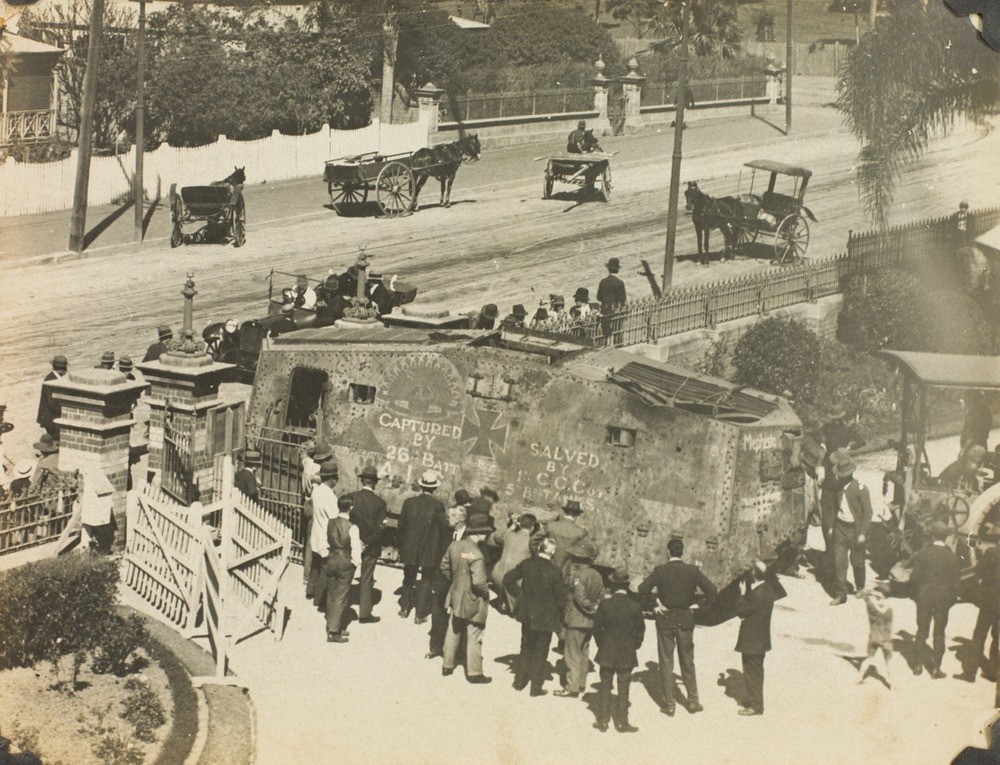
German tank "Mephisto" being moved into the grounds of the Exhibition Building at Bowen Hills, Brisbane, 1919. Acc: 29917-0001-0001.
The John Oxley Library has recently digitised a wonderful photograph album and various loose photographs taken by Brisbane entomologist and amateur photographer, Henry Hacker, who worked for many years at the Queensland Museum. The album contains significant home-front World War I images relating to peace celebrations and commemorations from the 1919 to 1920 period.
Henry Hacker was born in Essex, England, in 1876 and began his study of entomology at the British Museum. His taste for adventure led him to the goldfields of Charters Towers, Queensland, and it was during this period that his interest in Australian insects was born. He served in the South African Mounted Irregular Forces during the Boer War and afterwards made the first of three entomological collecting trips to Australia, identifying new species of insects from parts of the country which had never previously been studied.
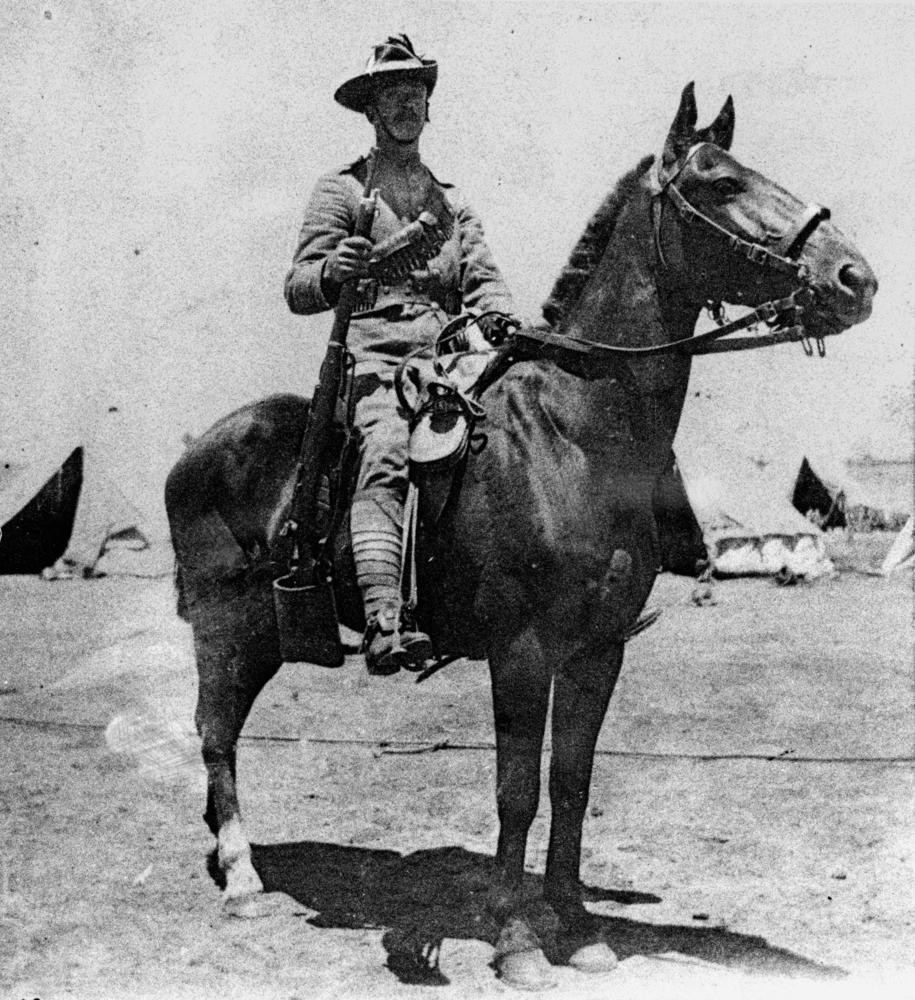
Trooper Henry Hacker during the South African War, ca. 1901. John Oxley Library, Negative No. 109555.
In August 1904 he took out a Miner's Right at Cairns, establishing his base in Coen, and in 1909 married Constance Callaghan, settling in the Upper Mulgrave Valley, south of Cairns, where he began a rubber farm. When this venture was unsuccessful the couple moved to Brisbane. On the 7th March 1911, Henry was appointed as an entomologist at the Queensland Museum where he worked until his retirement in 1943. He died on the 21st September 1973.
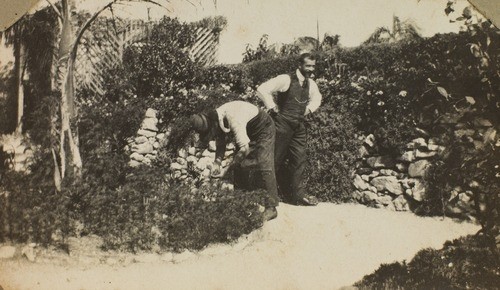
Henry Hacker in the garden of the Queensland Museum, Bowen Hills, Brisbane, ca. 1920. Acc: 29917-0001-0141.
The World War I photographs include images of the German tank, Mephisto, which was disabled and abandoned during a battle at Villers-Bretonneux, France, on the 24th April 1918. The Mephisto was salvaged as a war trophy by the 26th Australian Battalion in a daring night-time operation and brought back to Australia at the end of the war. In 1919 it was moved into the grounds of the Queensland Museum at Bowen Hills, in a complex operation involving two Brisbane City Council steamrollers.
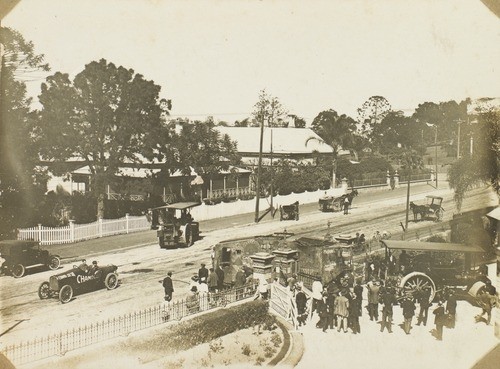
The Mephisto arriving at the Queensland Museum, Bowen Hills, Brisbane, August 1919. Acc: 29917-0001-0003.
The tank was on display at this site until 1986 when it was moved to the museum's new home in the Queensland Cultural Centre at South Brisbane where it was displayed in a purpose built climate controlled space. At present the Mephisto is on loan to the Australian War Memorial in Canberra until April 1917 when it will return once more to its home at the Queensland Museum. The Mephisto is the only surviving A7V tank in the world.
Other images include peace celebrations in Brisbane in 1919, and 1920 photographs of Anzac Day in Brisbane, and the vessel, H.M.S. Australia, in Moreton Bay. There are also several photographs of the visit of Edward, Prince of Wales, who toured Australia in 1920 on behalf of his father, King George V, to thank Australians for the part they played in the war.
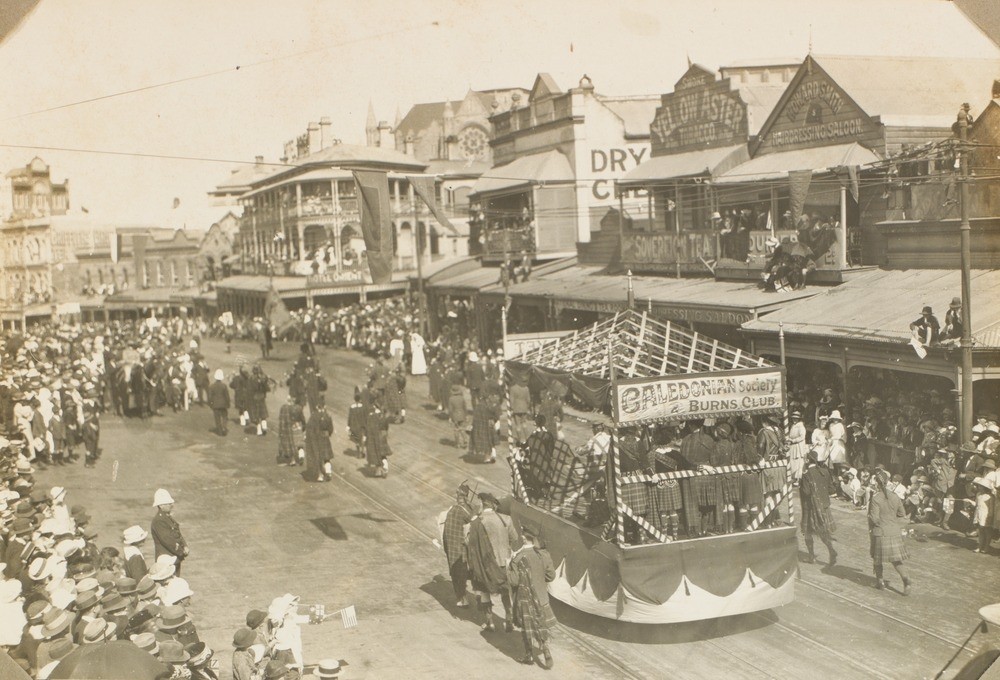
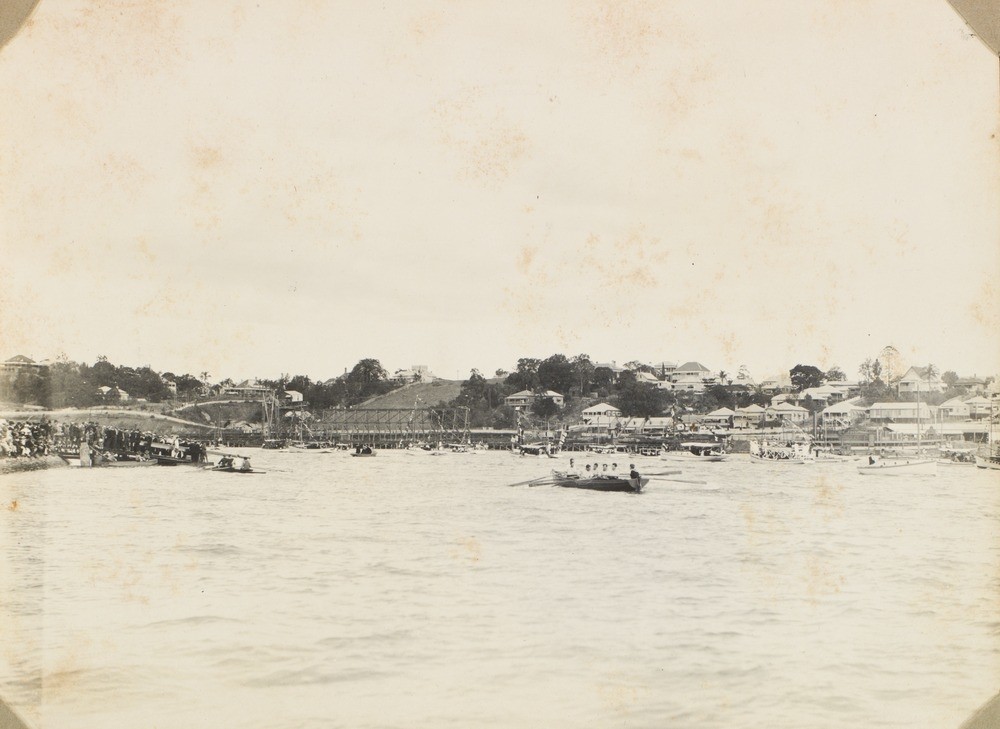
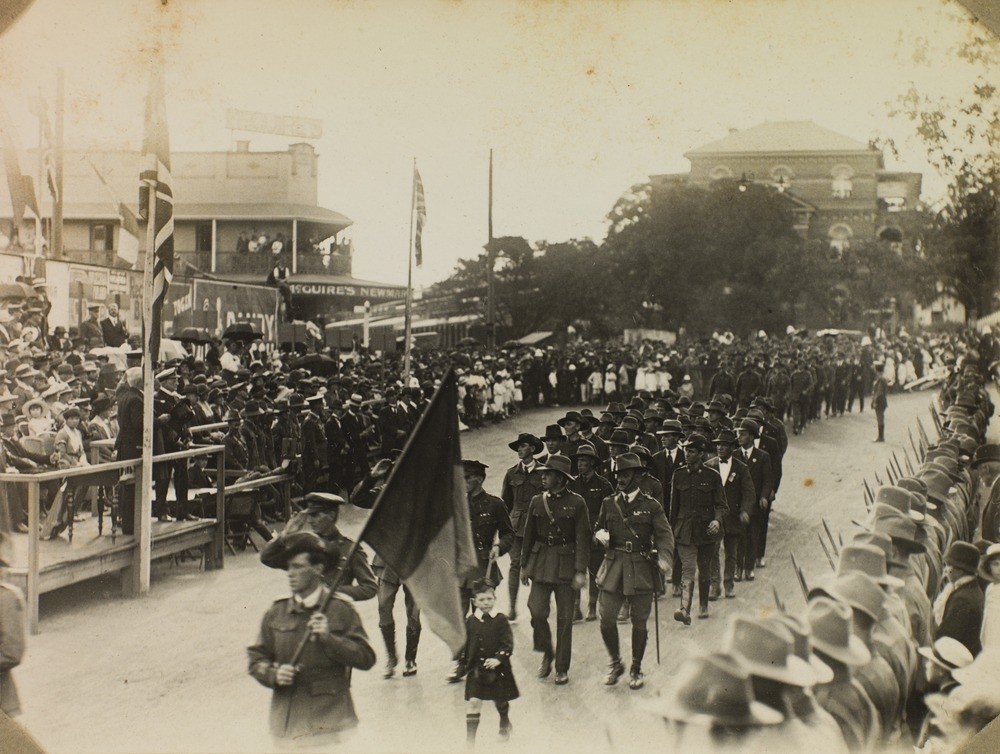
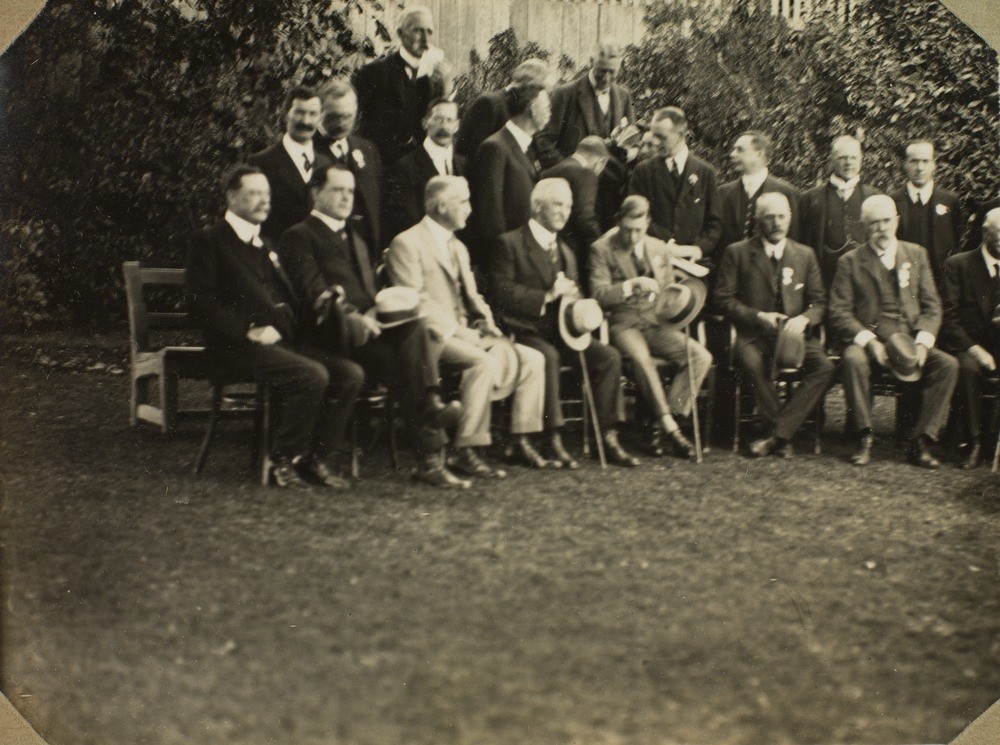
Edward, Prince of Wales, seated in the Museum Gardens, Bowen Hills, Brisbane, with a group of dignitaries, 1920. The prince is in the front row, fifth from left. Acc: 29917-0001-0132.
The other photographs in this rich and diverse collection include images of Mt. Nebo, the South Pine River, Stradbroke Island and Moreton Island. There are also images of Murwillumbah and Mount Warning in Northern New South Wales. The Brisbane images include the newly built Centenary Pool and Breakfast Creek Bridge; Newstead Park; Victoria Park; Brisbane Botanic Gardens; Ballymore; and the Brisbane Exhibition. In addition there are many photographs relating to sports, including hockey, bowls, rowing, football, and running. The charming study below shows three children in a rural setting, ca. 1950s.
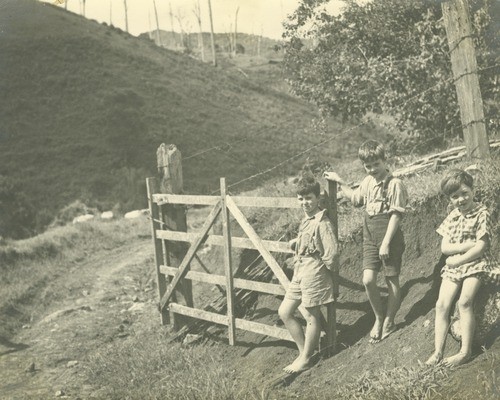
Barefoot children in a rural setting, Queensland, ca. 1950s. Acc: 29917-0050-0001.
The Henry Hacker photograph album and photographs may be viewed online at: http://onesearch.slq.qld.gov.au/SLQ:OM:slq_alma21153913070002061
Lynn Meyers, QANZAC100 Content Curator
Comments
Your email address will not be published.
We welcome relevant, respectful comments.